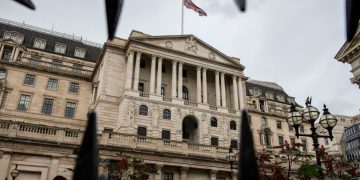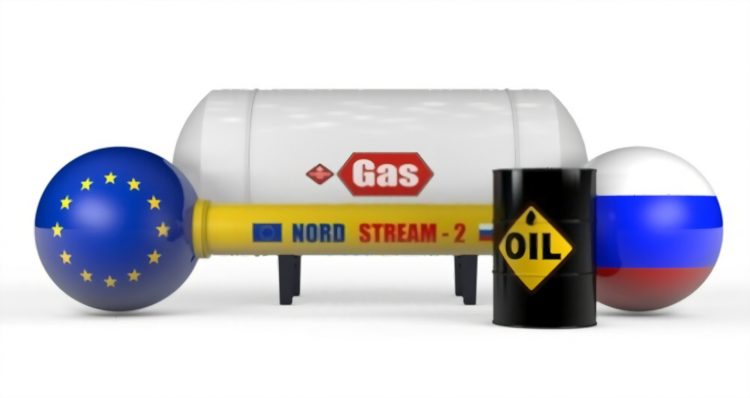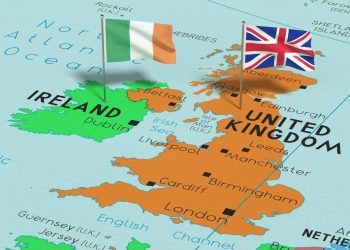Will Russia remain Europe’s leading energy supplier?
There has been increasing concerns about Russia invading Ukraine and then ceasing the exporting of natural gas in retaliation for European and U.S. sanctions. There are also concerns about the future of supplying Europe’s energy. These tensions indicate the risk of Europe’s reliance on Russia for its energy supply, which is about a third of the continent’s natural gas. While the U.S. has pledged to help by boosting exports of liquefied natural gas, or LNG, there’s only so much it can produce at once, and it has left Europe in a potential crisis.
Ukraine crisis and Europe’s energy security
The European energy challenge continues as the gas reserves of the continent reach their lowest level in 10 years. A severe winter can lead to a significant energy shortage and the closure of large parts of the European economy. Within months of the Belarus–European Union border crisis over the asylum, the Ukraine crisis once again highlighted the biggest weakness of the continent. That being the shortage of energy resources and the issue of importing gas to Europe.
Concerns over the Ukrainian war makes the unstable gas market even more dangerous in Europe’s cold winter. Europe is already facing gas shortages, and energy prices have hit record highs. Russian gas is not just for European heating homes. Instead, as a political weapon, it has played an essential role in Western-Russian diplomacy and the recent crisis in Ukraine.
Minsk had previously threatened to block one of the Russian gas pipelines to the European Union passing through Belarus. Still, now with the Ukraine crisis becoming more serious, the risk of disrupting Russian gas supplies to Europe is higher than ever, and the future of supplying Europe’s energy is uncertain.
No one can predict the next Russia’s action if the United States and Europe impose new sanctions. Although it has recently signed a gas deal with China, Europe remains its primary source of revenue.
Experts say that it would be more likely that Russia withholds gas sent through pipelines crossing Ukraine. Russia pumped 175 billion cubic meters of gas into Europe last year, nearly a quarter of it through those pipelines, according to S&P Global Platts. That would leave pipelines under the Baltic Sea and Poland still operating.
Utilizing energy dependency as a weapon
Russia’s geographical position toward the European Union has decreased its dependence on Middle Eastern energy resources. This, sequentially, has led the E.U. to grapple with the potential political consequences of reliance on Russian energy. Energy is an economic resource and a political tool for Russia to advance its goals in the region.
With the advent of Vladimir Putin, we are witnessing a sort of integration of economic and geopolitical purposes in Russian energy policy. The Nord Stream pipeline, which transported Russian gas directly to Germany, was opened in 2011 following the same procedure and caused an annual loss of $ 720 million for the USA. The pipeline is now responsible for transporting a third of Russia’s gas to Europe, bringing Russia’s gas exports to an all-time high in 2021.
Nord Stream 2, a 750-mile pipeline that connects Russia directly to Germany by sea, is currently one discussed issue. The infrastructure of this pipeline is ready and only waiting for a permit.
The pipeline passes through the territorial waters of several European countries, including Sweden, Denmark, Finland and Germany. If Nord Stream 2 is connected, about 26 million homes in Germany will utilize the gas injected into the line.
The pipeline crosses the sea bypassing Ukraine and Poland, unlike the old Russian gas pipelines that run through Ukraine and Poland. Both of which oppose Nord Stream, the two countries receive tolls from the current channels. Ukraine’s revenue through this means is estimated at $ 2 billion annually. The United States also opposes this pipeline, saying that Europe’s dependence on Russia threatens Europe’s energy security.
The countries opposing the Nord Stream believe that the pipeline makes Europe dependent on Russia more than ever. They warn that Russian President Vladimir Putin may use threatening Europeans to cut off the gas as leverage in the future.
The USA and the risk of a New Cold War
The U.S. has long speculated about Russian willingness to use trade to tie the hands of other countries – a concern dating back to the early days of the Cold War.
The Donald Trump government tried to persuade Europe to purchase gas from the United States instead of Russia. But most European countries preferred Russian gas, having a cheaper rate.
The European energy crisis and the rise in natural gas prices, in general, have created the conditions for increased U.S. liquefied natural gas exports. Last December, the United States became the world’s most significant exporter of LNG for the first time. In 2022, the United States is expected to maintain its position as the largest exporter of LNG.
Joe Biden had repeatedly stated his opposition to the Nord Stream 2 project during and after the presidential campaign. Some sanctions were imposed on the Biden government’s companies involved in the project. Still, due to Germany’s need to increase gas imports from Russia and Kremlin insisting on the project, Biden’s government sanctions could not prevent the project from consummating.
With Europe continuing to hit a record high gas prices facing a severe supply shortage, along with the crisis, U.S. natural gas (LNG) exporters are in an excellent position to take advantage of the crisis and increase their export rate.
Conclusion and a look towards the future
Europe and the United States are particularly concerned about significant disruptions in suppliance in a full-scale Russian invasion. The German government has stated that it will entirely cancel Nord Stream2 if this war occurs.
Nevertheless, such a move would consequently lead to a significant challenge. How can we provide the fuel that Europe needs while punishing Russia? U.S. President Joe Biden has vowed to impose high costs on Russia, including Russian communications banks, from the global financial system in case of initiating any attack. But if Putin responds by cutting off gas, this action will increase energy prices and inflation and weaken Europe’s economy.
To guarantee the future of supplying Europe’s energy, efforts are currently being made to meet Europe’s energy needs. It usually has a supply of gas for one month in case of emergencies.
One probable scenario would be to replace Qatari gas with Russian exported gas to Europe. According to a British Petroleum (B.P.) report, Qatar shares about twenty-two percent in the liquefied natural gas market. That is equal to Australia. While Russia’s share of natural gas exports to Europe using the pipeline is about eight per cent.
In February 2021, Qatar decided to invest 28 billion and seven hundred million dollars in LNG facilities, and in case the facilities are developed, LNG production will increase by forty percent. How well prepared will the country’s infrastructure be to export gas to Europe?
Analysts acknowledge that the contention in this matter is that even if these actions are implemented, they can ultimately reduce the short-term crises. Still, we will continue to witness high expenses.
Amy Myers Jaffe, a former senior member of the Council on Foreign Relations and an energy expert at Tufts University, argues that in case of a complete cut off in imports from Russia, Europe may find a way.
Jaffe stated that suppliers could shift some of their LNG shipments or replace their combustibles or more coal with gas by changing their energy basket. However, she always warns that changes in supply will lead to the future of supplying Europe’s energy to be at higher prices and make European consumers face higher rates.





























